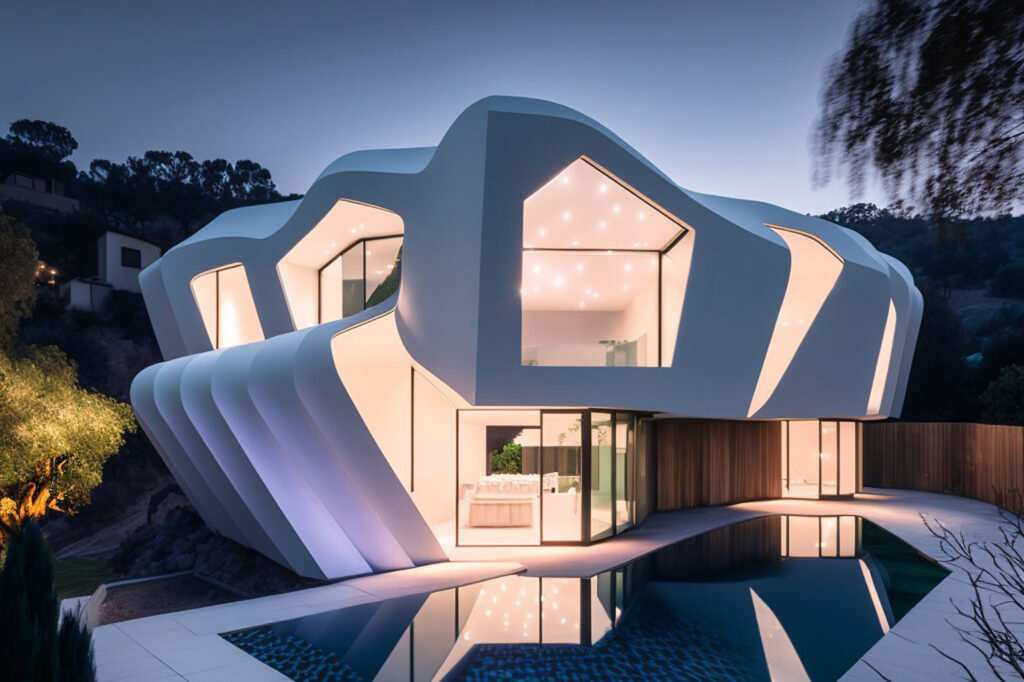With artificial intelligence rapidly changing various industries, architecture is not left behind. ChatGPT, a large language model, is increasingly being adopted by architects and designers to enhance creativity, streamline workflows, and improve communication with clients. This review dives deep into the ways architects are leveraging ChatGPT, its features, how it compares to other tools, and answers frequently asked questions.
Also Read [Veras : Plugin for Sketchup for Architectural Visualizations]
Table of Contents
ToggleHow Architects Can Use ChatGPT in Design
- Enhanced Communication and Collaboration: ChatGPT offers architects a way to draft proposals, emails, and reports quickly and efficiently. This helps them communicate their ideas effectively to clients and stakeholders. With clear prompts, architects can generate detailed explanations of their designs, which are particularly helpful when conveying complex concepts to non-technical audiences.
- Design Proposal Generation: ChatGPT can assist in generating initial design concepts, such as building layouts, room configurations, and architectural narratives. It helps in creating compelling presentations that allow architects to convey their vision persuasively. Moreover, the AI can help architects quickly draft project descriptions, which can save hours of manual writing.
- Creativity Booster: For architects looking to explore alternative designs, ChatGPT is useful in brainstorming ideas and generating creative solutions. It provides suggestions for various styles and aesthetics, from modern to traditional, enabling architects to explore a wider range of options for any project.
- Time Efficiency in Documentation: Tedious tasks such as creating design narratives and sustainability reports can be sped up using ChatGPT. By generating drafts quickly, architects can focus more on creative and analytical tasks, while ChatGPT takes care of the heavy lifting in documentation.
- Exploring Sustainability and Code Compliance: ChatGPT provides valuable insights into sustainable building practices and code compliance. Architects can ask specific questions related to building regulations, such as accessibility requirements, ensuring that their designs adhere to local codes.
Also Read [Apple Watch Ultra 2 Review: The Premier Smartwatch for Adventurers]
Key Features of ChatGPT for Architects
| Feature | Description |
|---|---|
| Design Ideation | Generates initial design ideas based on user input |
| Report Writing | Drafts progress reports, project updates, and sustainability narratives |
| Client Communication | Helps in writing client emails and proposals, ensuring clarity and precision |
| Code Compliance Assistance | Provides insights into building codes and local regulations |
| Sustainability Suggestions | Recommends sustainable practices and materials based on project requirements |
| Time Efficiency | Reduces the time spent on documentation and drafting reports |

Comparison with Other Design Tools
| Tool | Key Features | Pricing | Strengths | Weaknesses |
|---|---|---|---|---|
| ChatGPT | Design ideation, communication assistance, sustainability and code compliance insights | Freemium/Plus | Excellent for text generation and ideation | Lacks visual design capabilities |
| AutoCAD | 2D and 3D design, drafting, BIM integration | Subscription | Industry-standard CAD tool | Steep learning curve |
| SketchUp | 3D modeling, easy to learn, flexible for beginners and professionals | Subscription/Free | User-friendly interface | Limited advanced CAD functions |
| Revit | BIM software, detailed 3D modeling, construction management | Subscription | Comprehensive BIM features | Expensive and resource-heavy |
Integrating ChatGPT with Other AI Tools
Architects can combine ChatGPT with other AI-driven design tools for even better results. For instance, using MidJourney or DALL-E for visual ideation alongside ChatGPT for narrative generation can create a comprehensive workflow for both visual and textual output. Additionally, platforms like Maket allow architects to use AI to produce floor plans, sections, and 3D models faster than traditional methods, thus complementing ChatGPT’s text-based capabilities.
Purchase Options for ChatGPT
ChatGPT operates on a freemium model:
- Free version: Accessible to anyone, offering basic functionalities like text generation.
- ChatGPT Plus: A paid option at $20 per month, providing access to GPT-4, which offers improved responses, better performance, and priority access.
Frequently Asked Questions
Q1: Can ChatGPT create visual designs or 3D models?
No, ChatGPT is a text-based tool. It can assist with narrative generation, design explanations, and ideation, but for 3D modeling and visualization, tools like AutoCAD, SketchUp, or Revit are more suitable.
Q2: Is ChatGPT accurate for building code compliance?
While ChatGPT can provide general insights into building codes, it should not be relied on for the final compliance verification. Architects should still consult local regulations and experts.
Q3: How does ChatGPT enhance creativity in architecture?
By providing alternative design concepts, material suggestions, and brainstorming support, ChatGPT acts as a creativity booster, allowing architects to explore ideas they might not have considered initially.
Q4: What are the limitations of ChatGPT in architectural design?
The primary limitation of ChatGPT is its lack of direct integration with CAD or BIM software. It cannot create or manipulate visual designs. Additionally, its responses are based on the quality of the prompts, so detailed and clear questions yield better results.
Q5: How does ChatGPT compare to traditional architectural software?
ChatGPT complements traditional architectural software by speeding up tasks like drafting emails, writing proposals, or generating ideas. However, it lacks the technical drawing and 3D modeling capabilities of software like AutoCAD or Revit.
Conclusion
ChatGPT offers architects a powerful tool for communication, creativity, and workflow management. While it doesn’t replace CAD software or provide visual modeling capabilities, it enhances the overall design process by offering faster text generation, idea exploration, and code compliance insights. For architects looking to optimize their workflow and improve communication with clients, ChatGPT is a valuable addition to their toolkit.
In conclusion, leveraging ChatGPT alongside traditional architectural design tools can streamline processes and unlock new creative possibilities, enabling architects to focus more on their craft.
